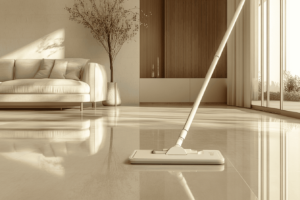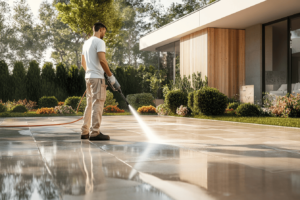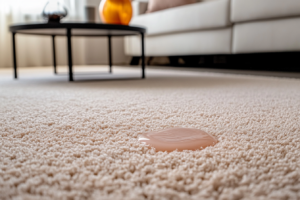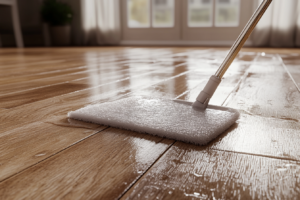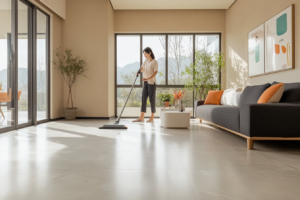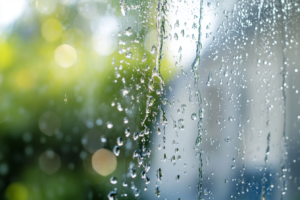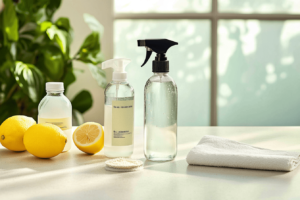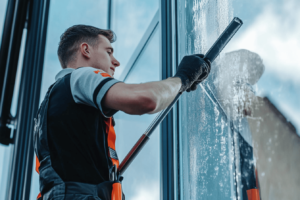A clean floor can make your whole home feel fresh and inviting. But with so many different floor types, knowing the right cleaning method is essential. Using the wrong technique could lead to scratches, stains, or even long-term damage. So, you’re looking for the best floor cleaning method for hardwood, laminate, tile, vinyl, and carpet? Don’t worry—our expert house cleaners have got you covered! In this guide, we’ll walk you through the best cleaning methods for every type of flooring, plus extra tips to keep your home looking spotless.
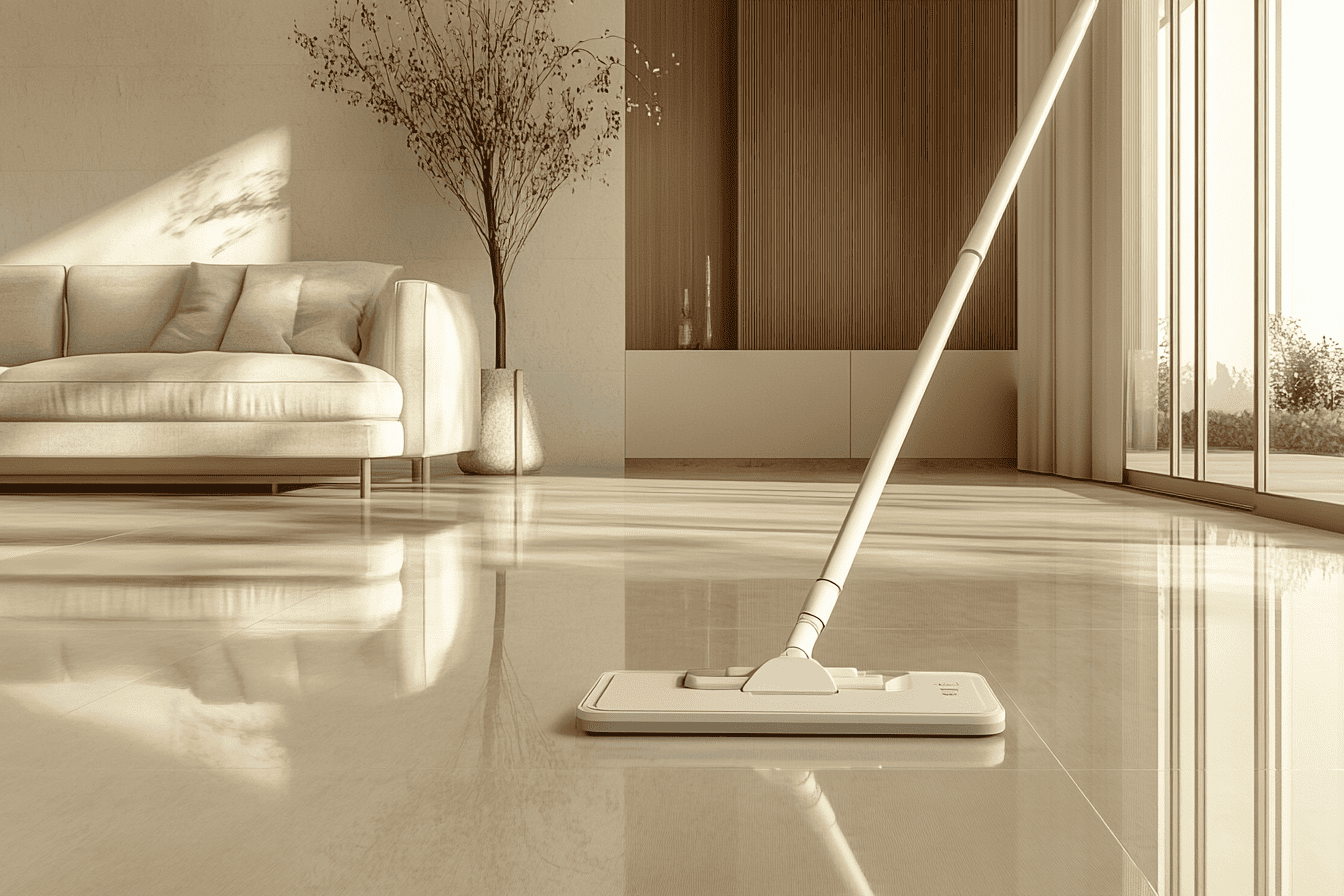
What is the Best Method for Cleaning Floors?
Keeping your floors clean isn’t just about appearances—it helps maintain hygiene and extends the life of your flooring. The best floor cleaning methods depend on the type of floor, but one effective technique used by professionals is the two-bucket cleaning system. Let’s explore how it works, the essential tools you need, and safety tips to keep in mind while cleaning.
The 2 Bucket floor Cleaning Method Explained
The two-bucket system is a professional floor cleaning method that prevents dirty water from being spread back onto your floors. Instead of using the same bucket of water for the entire cleaning process, you use:
Bucket 1: Filled with clean water and floor cleaner.
Bucket 2: Filled with plain water for rinsing the mop.
How It Works:
- Dip your mop into Bucket 1 (clean water with detergent).
- Wring out excess liquid and mop a section of the floor.
- Rinse the mop in Bucket 2 (plain water) to remove dirt.
- Repeat the process, always using fresh cleaning solution from Bucket 1.
Essential Tools for Effective Floor Care
To achieve spotless floors, you need the right tools. Here’s what you should have:
Basic Floor Cleaning Kit:
Microfiber mop – Traps dirt better than traditional cotton mops.
Vacuum or broom – Removes dust and debris before mopping.
Neutral detergent – Safe for most floor types.
Two buckets – For the two-bucket system.
Soft cloth or sponge – For spot cleaning and stains.
Extra Tools for Deep Cleaning:
Steam cleaner – Ideal for sanitising tile and carpets.
Grout brush – Helps remove dirt from tile grout.
Furniture pads – Prevent scratches on hardwood and laminate floors.
Safety Measures before and during the mopping process
Cleaning floors can sometimes pose risks, especially when dealing with wet surfaces or strong cleaning agents. Follow these safety tips to prevent accidents:
Prevent Slips and Falls:
- Always place a “Wet Floor” sign if cleaning in a shared space.
- Wear non-slip footwear while mopping.
- Avoid walking on wet floors until they are completely dry.
Protect Your Hands and Skin:
- Wear gloves when using cleaning solutions, especially strong disinfectants.
- Avoid mixing bleach with ammonia—it creates toxic fumes.
Ensure Proper Ventilation:
- Open windows or use a fan to reduce strong odours from cleaning products.
- If using a steam cleaner, allow steam to fully dissipate before walking on the floor.
Mastering Basic Floor Cleaning Methods
Keeping your floors clean isn’t just about making your home look good—it also helps maintain hygiene and extends the life of your flooring. Mastering the right floor cleaning methods, like sweeping, vacuuming, and mopping ensures that dirt, dust, and spills don’t build up over time. Proper sweeping and vacuuming remove debris before mopping, preventing scratches and streaks. Using professional floor cleaning methods, such as the two-bucket system, helps maintain shine while reducing residue. And when it comes to stubborn stains, knowing which cleaning solutions work best for each floor type can make all the difference. With the right approach, you’ll keep your floors looking spotless and fresh with minimal effort!
Best Ways to Clean Different Floor Types
Best method to clean hardwood floors
A gentle approach works best for maintaining beautiful hardwood surfaces. Mix one cup of pH-neutral dish soap with a gallon of warm water for regular cleaning needs. This simple solution removes daily grime without damaging the wood’s finish.
For tougher spots, create a natural cleaning blend using equal parts water and white vinegar. However, use this sparingly as frequent vinegar applications may dull the surface over time.
Professional Wecasa cleaners recommend working in small sections, moving with the wood grain for optimal results. A well-wrung microfiber mop prevents excess moisture from seeping between boards. Remember to promptly dry each area with a soft cloth to preserve your floor’s natural luster.
How to mop Hardwood Floors
Mopping hardwood floors correctly is key to maintaining their beauty without causing damage. Follow these step-by-step instructions for the best results:
- Remove dust, dirt, and debris with a soft broom, microfiber mop, or vacuum (skipping this step can lead to scratches when mopping).
- Use a neutral detergent or a homemade solution (never use excessive water—moisture is the biggest enemy of hardwood).
- Dip a microfiber mop into the cleaning solution and wring it out thoroughly. The mop should be damp, not dripping wet !
- Always mop following the natural grain of the wood (this prevents streaks and helps lift dirt more effectively).
- Let the floor air dry completely before walking on it.
Bonus Tip: If your hardwood floor has a matte or dull finish, buffing it lightly with a dry microfiber cloth after mopping can help restore shine!
Best ways to clean and maintain Laminate Flooring
Caring for laminate flooring requires a delicate balance of thorough cleaning without excess moisture. A microfiber dust mop proves essential for daily maintenance, removing surface debris before it can scratch the protective layer.
When deeper cleaning becomes necessary, mix one part white vinegar with three parts water in a spray bottle. Mist the solution lightly onto small areas rather than saturating the floor. This technique prevents water damage while effectively removing stubborn marks.
Place protective felt pads under furniture legs and trim pet nails regularly to prevent scratches. For high-traffic zones near entrances, strategically positioned doormats catch dirt and moisture before they reach your laminate surface.
Consider running a dehumidifier during humid months to protect your flooring from warping. This simple measure significantly extends the life of your laminate floor while maintaining its pristine appearance.
How to clean carpet floors
Regular carpet cleaning will keep your carpet fibers fresh and extends their lifespan. Start with thorough vacuuming to remove surface debris and lift matted areas. Pay special attention to high-traffic zones where dirt accumulates quickly.
For deeper results, mix a specialized carpet shampoo with warm water according to product instructions. Work in small areas using gentle circular motions to prevent oversaturation. A professional-grade vacuum cleaner with strong suction power ensures optimal results.
Tackle spots promptly by blotting rather than rubbing to prevent fiber damage. For stubborn stains, Wecasa’s cleaning experts recommend testing any cleaning solution on an inconspicuous area first. Between professional treatments, sprinkle baking soda across the surface, let it sit for 30 minutes, then vacuum thoroughly to neutralize odors.
How to Remove Stains from Carpet
Spills and stains are inevitable, but quick action prevents long-term damage. Here’s how to handle common carpet stains:
| Type of Stain | Best Cleaning Method |
|---|---|
| Wine or juice | Blot with club soda and a microfiber cloth. |
| Coffee or tea | Mix white vinegar, warm water, and dish soap, then blot. |
| Pet accidents | Use baking soda & white vinegar to neutralise odours. |
| Grease or oil | Sprinkle cornstarch, let sit, then vacuum. |
| Ink or marker | Dab with rubbing alcohol (don’t rub!). |
Important: Always blot, never rub, to prevent spreading the stain!
Vinyl Floor Care Guidelines
Proper maintenance keeps vinyl floors beautiful and durable for years. A gentle sweep with a soft-bristled broom removes surface debris, while a damp microfiber mop with warm water tackles everyday dirt.
For deeper cleaning, mix a capful of pH-neutral cleaner with water. Never use abrasive materials or harsh chemicals that could damage the protective surface layer. Tackle spills promptly with a soft cloth to prevent staining.
Place walk-off mats near entrances to catch dirt and grit before they reach your vinyl surface. When moving furniture, lift rather than drag to preserve the floor’s finish. During winter months, minimize salt exposure by removing wet shoes at the door.
A quick dry-buff with a clean microfiber cloth restores shine after mopping, keeping your vinyl looking fresh between deep cleans.
How to clean porcelain and ceramic tile floors
Start your tile cleaning routine with a pH-neutral cleaning solution mixed with warm water. This combination effectively removes daily grime while protecting both glazed and unglazed surfaces. For tough stains on porcelain tiles, create a paste using baking soda and water, applying it directly to the affected area.
Working in small sections helps maintain consistent results across your floor. A microfiber mop works wonders for regular maintenance, while a soft-bristled brush tackles stubborn dirt in textured areas.
Best Cleaning solutions for Porcelain and Ceramic Floors
The right cleaning solution will keep your tiles shiny without leaving streaks. Here are some great options:
- Warm water & mild detergent – The safest daily cleaning solution.
- White vinegar & water (for deep cleaning) – Mix ½ cup of white vinegar with 4 litres of warm water for a natural, streak-free shine.
- Baking soda paste (for stains) – Mix baking soda with a little water, apply to stains, let sit for 5 minutes, then scrub gently with a soft brush.
Pro tip: Always test a new cleaner on a small, hidden area before applying it to the entire floor!
How to clean dirty grout lines
Grout can trap dirt and stains, making your floor look dull. Here’s how to clean it effectively:
- Make a paste – Mix baking soda and water until it forms a thick paste.
- Apply to grout lines – Spread the paste on grout and let it sit for 10–15 minutes.
- Scrub gently – Use a soft brush or old toothbrush to lift dirt.
- Rinse thoroughly – Wipe away residue with a damp cloth.
Avoid using too much water on grout, as it can lead to mould growth over time.
Advanced Floor Care Methods for all types of floors
Beyond basic maintenance, specialized floor cleaning methods can breathe new life into worn surfaces. For marble floors, professional crystallization treatment creates a protective shield while enhancing natural shine.
Natural stone surfaces benefit from periodic honing and polishing to remove surface scratches and restore original luster. A professional-grade floor buffer with graduated diamond pads achieves optimal results.
Steam extraction proves highly effective for deep-cleaning textured surfaces and porous materials. This method penetrates below surface level to lift embedded dirt without harsh chemicals. Consider applying commercial-grade sealants after deep cleaning to protect against future staining and wear.
Regular maintenance using rotary machines with appropriate pads helps maintain shine between major treatments. This approach works particularly well in high-traffic areas where daily foot traffic takes its toll.
Need an extra hand? We know life can get hectic, but that’s where Wecasa comes in! Our expert domestic cleaners are just a few clicks away. Book a home cleaning session today, sit back, and enjoy a spotless home—effortlessly!


